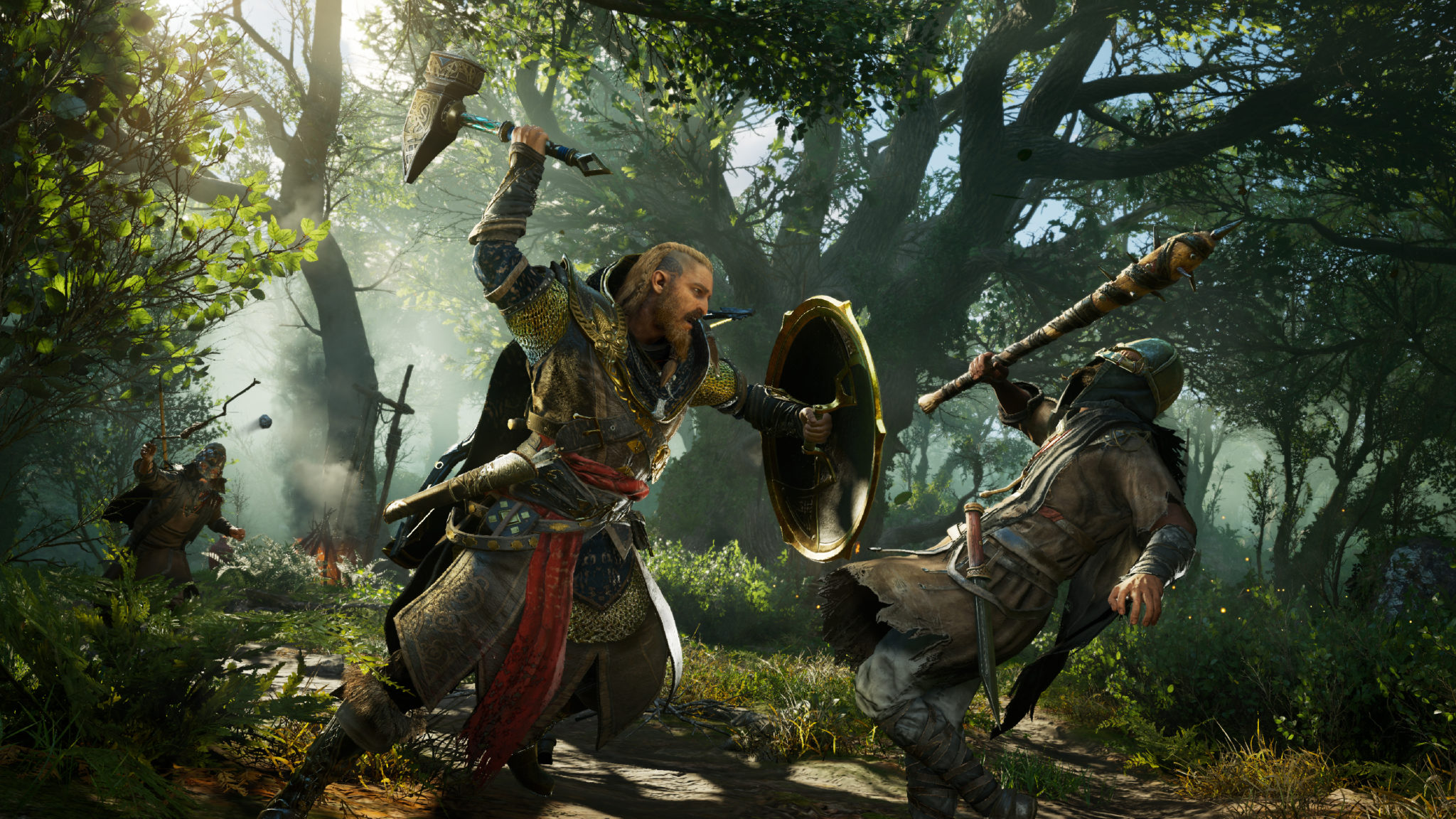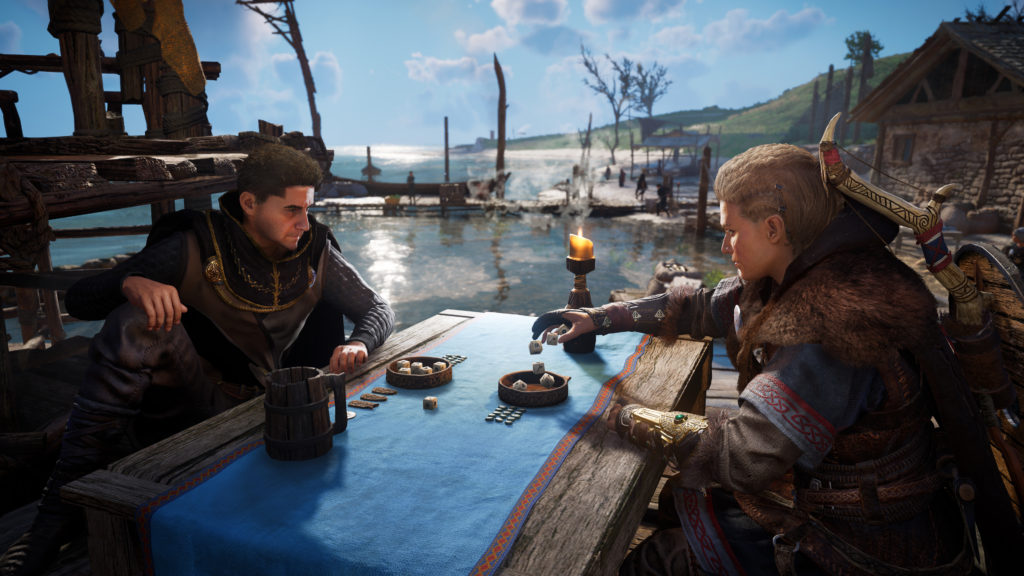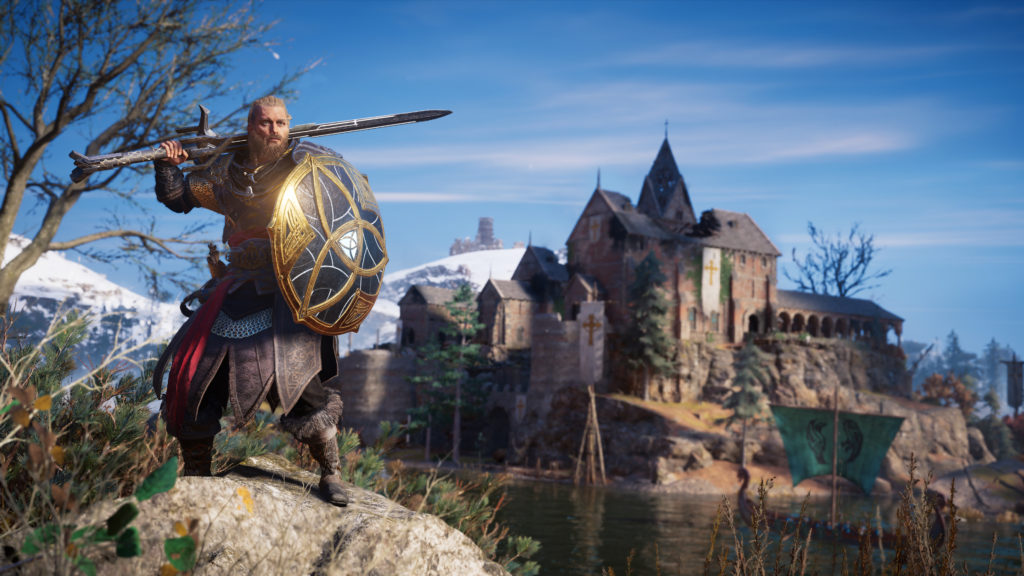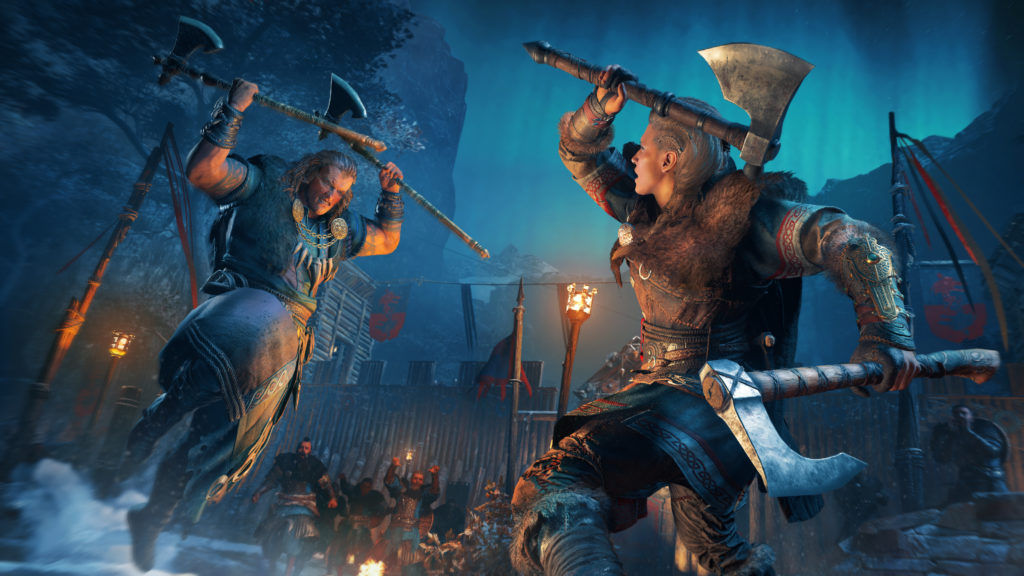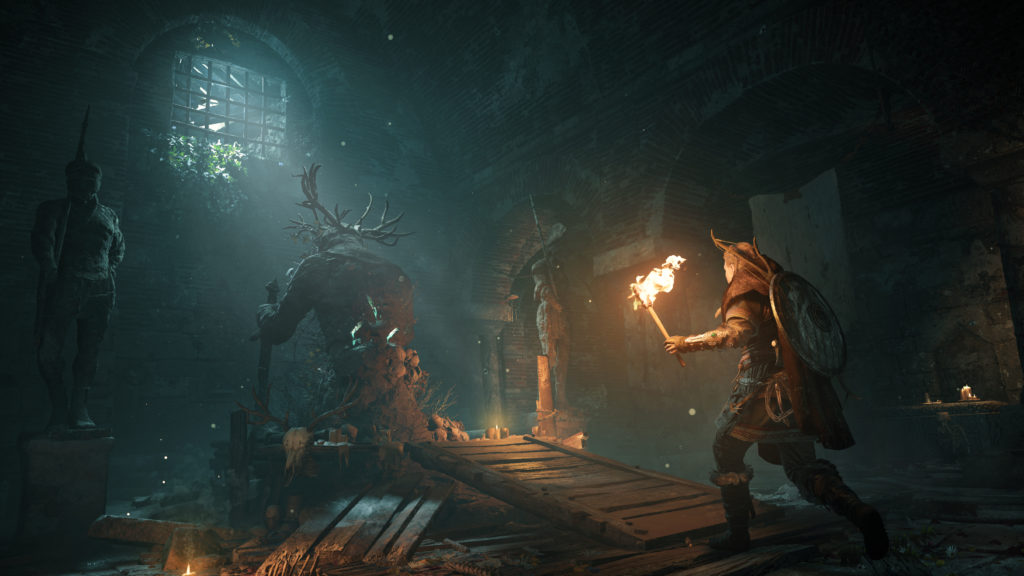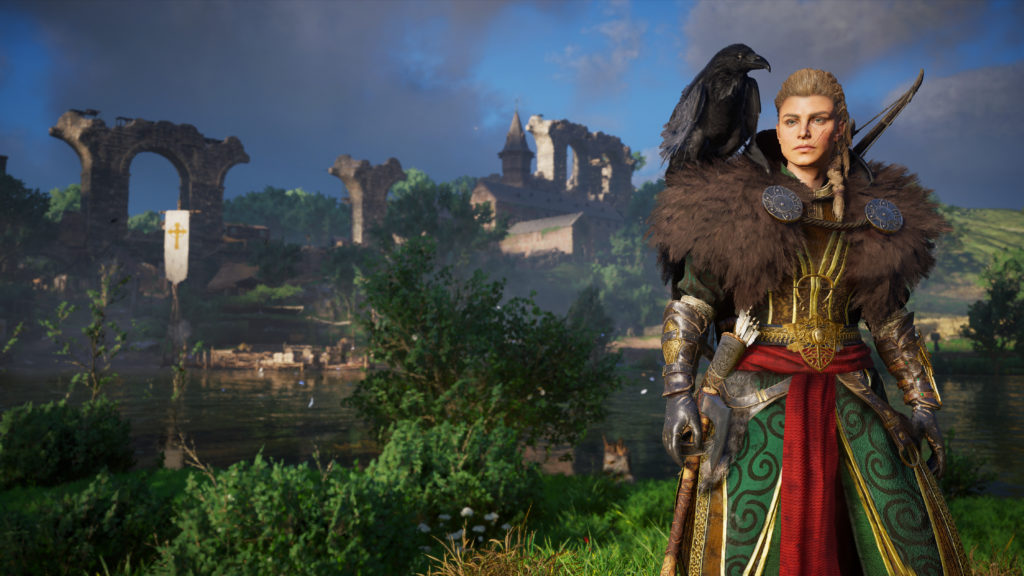Title – Assassin’s Creed: Valhalla
Platforms – PS5, PS4, Xbox Series X/S, Xbox One and PC
Release Date – November 10th, 2020
Developer – Ubisoft
Publisher – Ubisoft
MSRP – $59.99
ESRB – M for Mature
Disclaimer – This product is being reviewed on the Xbox Series X. A review copy was provided by Ubisoft for the purpose of this review. This review may also contain spoilers for certain gameplay and story elements. Watch at your own risk, you have been warned. Gaming Instincts is an Amazon Affiliate and does gain financial benefits if you choose to purchase this product on this page.
It is rare to see a video game set in the Viking era, but thankfully franchises such as Assassin’s Creed give players the opportunity to explore ancient history. Assassin’s Creed: Valhalla takes place in the Nordic era, filled with Norse mythology and gods, such as Odin and Fenrir, and, of course, it would not be a Viking period without the grand navy of the Norseman. At this point, Assassin’s Creed fans have arguably seen it all, and the eras and civilizations are limited, but the Viking era may bring something new to the table for Assassin’s Creed.
Masterful Storytelling in Assassin’s Creed: Valhalla
Assassin’s Creed: Valhalla begins at a slow pace like most story-heavy RPGs. However, in a nutshell, the beginning of the game is basically a typical revenge plot that has been used many times before in all forms of media, including films, books, and video games. While the start of the game won’t blow anyone away with anything surprising, it will set the stage on what they need to do next and they, as Eivor (the main character, who can be either male or female based on what players choose before they’ve started the game), will have a clear path and understanding where the story is going next. While the plot of Assassin’s Creed: Valhalla may be predictable with how it starts, it is the storytelling itself, the characters, the voice acting, and how it flows is what sets it apart from other games that makes it intriguing and exciting.
It is a rare occurrence for individuals to like almost every character presented in a story, but there is something different about the cast in Assassin’s Creed: Valhalla. Almost every character fans will come across will feel natural, likable (whether they are good or evil), and, most importantly, fun to listen to when speaking. Everything from their voice acting, looks, and background is interesting, especially the ones that are filled with a darker past or have a mysterious and foreboding tone to them. The writing of a lot of the characters is all around great, even the ones that play supportive roles or do not get a lot of time on the screen. Even some of the ones in the more humorous side quests have their own charm and unique personality.
Fans will also get their Assassins versus Templars, along with the modern era Animus/Abstero, plot like they always have in previous installments. This time around, however, it’s a lot more exciting, fun, and gamers will be on the edge of their seat at every twist, corner, and mainline quest. To summarize the storytelling of Assassin’s Creed: Valhalla, it’s probably best compared to something like The Witcher 3 and Game of Thrones. If someone is looking for great lore, a good cast, and a typical Medieval plot that is filled with kings, betrayal, murder, ambitions, violence, and occasional comedic relief mixed in with Viking mythos and a ton of alcohol then they will have a great time.
Exploration and Gameplay
As good as Ancient Egypt and Greece were both in Origins and Odyssey, the regions and map sizes in Valhalla are just as large and beautiful to explore. The biggest change Assassin’s Creed: Valhalla has done compared to previous entries is exploring feels a lot more natural rather than “go to this marker and leave.” No longer will players be forced to go to a question mark on their map and look for 10 million things in a tiny area or hundreds of chests and treasures to collect. Instead, the exploration feels a lot tighter, but much more satisfying than it ever did in previous titles and that’s simply because many of the items players can collect in Assassin’s Creed: Valhalla are necessary for their gameplay path and character power progression. For example, each region is divided into three different collectibles: Wealth, Mysteries, and Artifacts.
Wealth includes items hidden in big treasure chests and usually contain supplies for players’ settlement building, a piece of unique armor or weapon, or a vital crafting material that will upgrade armor and weapons. No longer will gamers be collecting useless items or trinkets that are sold to merchants for easy gold; this change alone feels fantastic and gives the player a much bigger sense of urgency to raid a monastery with their crew members or go off alone to an enemy camp and take everyone out to collect the shiny loot.
Mysteries are World Events that are basically a fancier way of saying side quests, however, what players will find incredible is that every side quest they do is not simply a go to X location and kill Y bandits or beasts. Instead, these world events are more like small little lore moments where Eivor meets different characters, and these characters have their own story to share with fans and the quests themselves are brief but worthwhile. For example, in one of the World Events Eivor came across a Viking warrior with an axe that was stuck in his head. The Viking warrior would ask Eivor, “Why am I in such a pain and why does it feel like I have a headache?”
While it seemed silly, it was humorous, and it broke the pace a bit and made the world feel more natural. The player can complete this quest by confronting the warrior and telling him that for Eivor too ease his pain he will need to take the axe out of his head, but if Eivor does that the warrior will die. The tormented character then agrees and tells Eivor he wants to be sent to Valhalla and rest in peace. That was the entire quest; it was simple, filled with dark humor, well-written, and fun to experience.
Last but not least, there are Artifacts to collect across different regions. Some regions have more Artifacts than others, just like how others have more or less Wealth and Mysteries to discover. Artifacts are collectibles, such as tattoos, or unique items that players give and trade in their museum at their settlement once they have built one. Overall, the natural progression of the world exploration feels a lot more organic this time around than in previous games. Most importantly, the rewards are worth the effort.
Settlement System, Raiding, and Difficulty in Assassin’s Creed: Valhalla
Assassin’s Creed always had some sort of real estate elements in its previous titles, beginning with Assassin’s Creed II where players could buy shops that would generate money and blacksmiths that would provide upgrades. In Assassin’s Creed: Valhalla players can start a settlement in the game’s early stages. With the settlement system fans are required to have supplies and materials to build certain types of buildings across their settlement. Players can construct buildings, such as museums, that unlock new gameplay elements, such as collecting ancient Roman artifacts they can give to the museum keeper that grants various rewards. Gamers can also build a Hunter Hut and start receiving quests from an NPC named Petra, who will send them to hunt down various beasts, including legendary ones that have better rewards. Delivering just enough wolf claws or boar tusks and other rare items from animals will reward players with more character progression. If someone is a completionist, then this is another fun thing to do.
To get building supplies and materials the player will be required to raid with his or her crewmates across different regions, and this is where the Viking fantasy comes into play. Once Eivor is in a raid zone he can take out his war horn to signal a raid call and everyone will start charging and slaughtering each other. Eivor’s crew members can also help him by forcefully opening locked doors into monasteries that are filled with Wealth collectibles that contain the supplies and materials for various buildings. Once everyone in the raiding zone has been slaughtered the camp is free to explore. Raiding is also part of essential story progression as it will help Assassins find clues on Templar Order members, where they reside, and who they might potentially be on their list to hunt down and assassinate. The raiding mechanic is well done, feels fun, and fits the Viking play style and culture, which is a vital element for a title set in this era.
Something new that Assassin’s Creed: Valhalla has also introduced is the addition of new difficulty settings for three different elements of the game: Exploration, Combat, and Stealth. Instead of choosing a single difficulty like in the previous titles, the player may now choose how smart and hard they want the AI to be when it comes to physical combat in the game and a separate modifier as well for stealth combat; it presents numerous options on how advanced they want the AI to be when it comes to detecting Eivor during stealth. The game also lets players choose how immersive of an exploration experience they want when it comes to the HUD display and on-screen elements. Playing Assassin’s Creed: Valhalla without the HUD elements is a much better experience and it doesn’t make it much more difficult. Rather, it actually complements the design, world, and overall gameplay experience.
Combat, Character Progression, and Gear
Character progression is more in-depth and relies on more RPG elements than Origins and Odyssey. In Assassin’s Creed: Valhalla, the items players find are unique and not as abundant as they were in previous installments. Instead, the game relies on the skill tree and level progression than just gear. Previously, it was all about gear. However, in Assassin’s Creed: Valhalla, the overall character level plays a much more important role when it comes to power fantasy and RPG stats. The skill tree is vast and can be utilized in any combination and paths players prefer. If players wish to get more combat skills and perks over range or stealth, they can do that, or if they want a hybrid of two or even three combined, they may do that as well, though, they will either lose out on other perks they could have received earlier or just get them later. If the player is already deep into a tree and wants to reset all of his or her skills, then they may do so and re-spec in any way they or prefer without a cost or any kind of blockage.
The way gear works in Assassin’s Creed: Valhalla is interesting because fans can upgrade any piece of gear they get to Mythical status. No longer will players be finding Mythical-only pieces of gear or blue or epic. Instead, any item can be upgraded to its fullest end-game potential assuming the individual has the required materials, silver (money), to upgrade it to such a status. Armor and weapons also have a system called “A Way of the Animal.” For example, if gamers have pieces of gear that are tied to a “A Way of the Bear” or a “A Way of the Raven,” they can choose specific stat bonuses if they spec into “A Way of” a certain animal spirit in their skill tree. This allows for some interesting combinations. “A Way of the Bear” is more geared towards players who prefer a direct approach in combat. Meanwhile, “A Way of the Raven” gives more stat bonuses toward stealth. On top of that, players can also insert different types of runes into their gear and weapons. The runes can range from defensive, such as block and a flat health increase, or offensive, such as critical chance or stealth damage.
Last but not least, throughout the world of Assassin’s Creed: Valhalla Eivor may come across Books of Knowledge that grant him special abilities that can be mapped to LT or RT with a combination of ABYX or Triangle, Circle, Square, and X on players’ controllers. Combat abilities are usually tied to RT plus the buttons and range abilities are tied to LT plus the buttons. Combine all of these elements with the new power progression system, gear upgrading, and an overhauled gear system and fans have fantastic and much more satisfying combat they’ve ever experienced in any Assassin’s Creed game to date.
The only real gripe with the combat system is that sometimes the controls can feel a bit unresponsive, delayed, and confusing because there are a lot of mechanics tied to button mapping. There have been numerous times during the review process where an accidental wrong button press happened due to mild muscle confusion of where the controls were mapped. After a while, though, the player should get used to the controls and remember where everything is after a bit of practice and playtime.
Also, some of the combat animations may look odd here and there, but thankfully nothing too game-breaking. Overall, the new systems are exciting, fun with which to mess. It is also worth noting that this is the first Assassin’s Creed game to ever feature gore and beheading, which is a great thing to finally see. A game set in the Viking era without gore would be jarring.
Visuals, Technicalities, and Audio in Assassin’s Creed: Valhalla
Assassin’s Creed: Valhalla is not a next-gen looker by any means. However, it is still a visually pleasing game for how vast it is and what it does. It is safe to say that Assassin’s Creed: Unity is still the best-looking Assassin’s Creed title ever created in the history of the franchise. Although, everyone remembers how badly it ran, how poorly optimized it was, and Ubisoft’s ambition was on the high end. Following Origins and Odyssey, though, the games took a much more conservative approach on the visuals that would not overheat the last-gen systems or cause the game to freak out and slow down while still maintaining a stable frame rate and playability. Assassin’s Creed: Valhalla follows the same rules: Make it look good, but do not make it look amazing because the older machines simply do not have the required GPU or CPU power to get it to the real next-generation aesthetics and feels.
Fans have to realize that this is not a true next-gen game, it is a cross-generation title like Assassin’s Creed IV: Black Flag was during the PS4/Xbox One launch era and the end of PS3 and Xbox 360. If players are seeking or expecting this entry to blow their minds with visuals, they must look elsewhere for the time being. That won’t be happening for perhaps another year or two at most, until Ubisoft releases the next entry in the franchise, which is expected to only be for next-gen systems and won’t be forced to be scaled down for playability and game design on the older machines.
This specific product was reviewed on the Xbox One X. During the entire review process, never was there a time of awful frame rate drops, game-breaking slowdowns, or any sort of awkward bugs that broke the game, nor were there any crashes. There were some funny visual glitches here and there, such as corpses rag-dolling in the air once in a while or being stuck in a small tiny crevice due to questionable player decision, but nothing on the Assassin’s Creed: Unity levels, and when they did happen, it happened maybe twice out of the 30+ hour review playtime.
The audio in Assassin’s Creed: Valhalla is more than serviceable. The game won’t blow anyone away with amazing sounds or incredible design, but what it will provide fans with is fantastic voice acting and an incredible Noridc-style soundtrack, which is more than enough to bring a satisfying experience. Overall, Assassin’s Creed: Valhalla runs great on the Xbox One X, looks good visually, and doesn’t have any game-breaking bugs or other glaring issues.
Final Verdict
Assassin’s Creed: Valhalla is a fantastic send-off as the last game in the series for this generation of consoles. It combines the best elements of Origins and Odyssey and makes it even better; it has great storytelling, a lovely cast of characters, a beautiful world, and plenty of areas to explore, and it is a lot of fun and feels great. The game is a tad slow at the beginning but picks up once players get out of the first region. This is arguably the best Assassin’s Creed game in the last 10 years. This game deserves to be a Game of the Year nominee due to how enjoyable the story is, the mechanics, exploration, and everything else despite it being a cross-generation title. 2020 is a competitive year for games and there is a ton of great content out there, but Assassin’s Creed: Valhalla is a glorious masterpiece that must be experienced.



